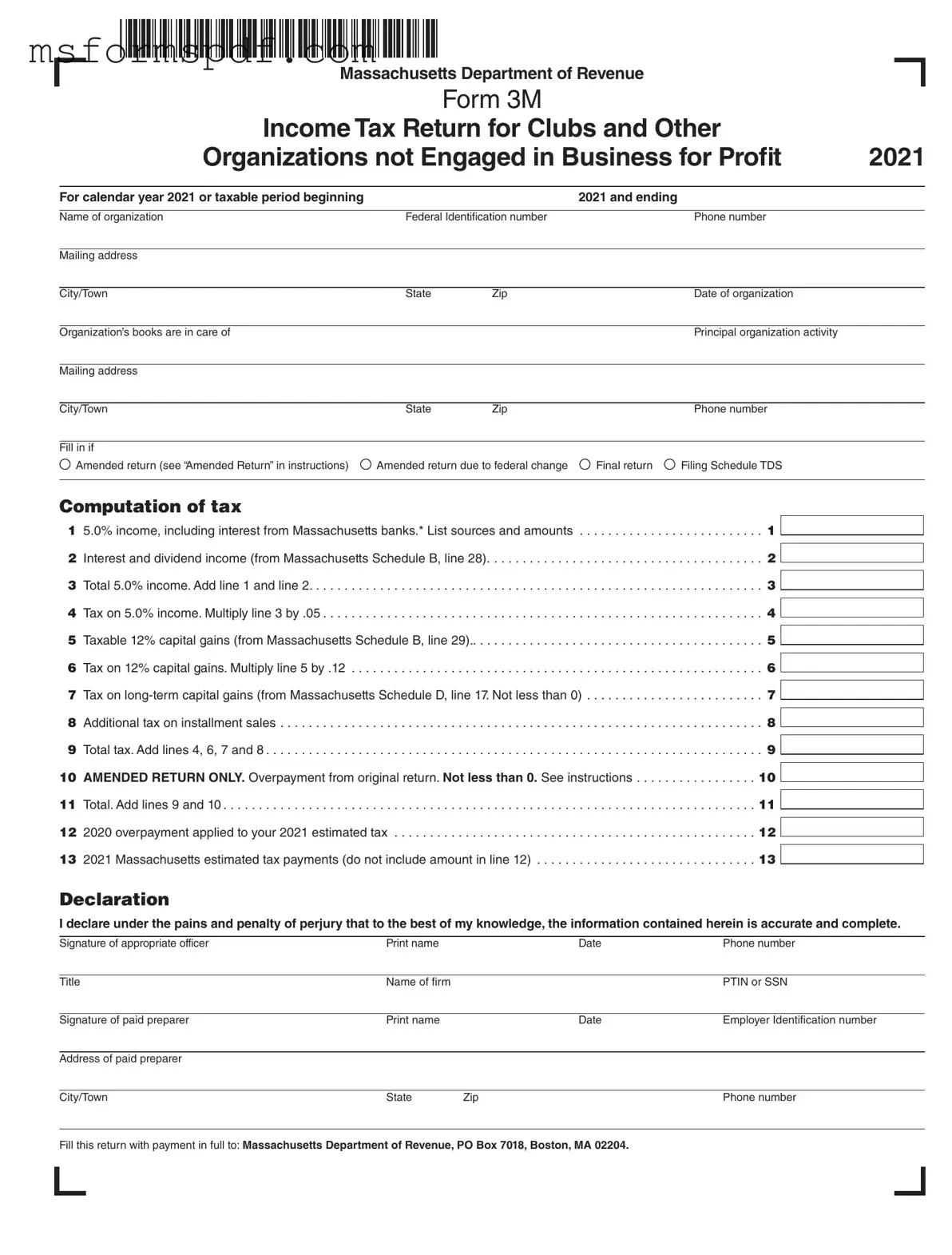Free Massachusetts 3M Template in PDF
The Massachusetts 3M form is an income tax return specifically designed for clubs and other organizations that do not engage in business for profit. This form allows these entities to report their taxable income, including interest, dividends, and capital gains. Proper completion of the 3M form ensures compliance with state tax regulations while facilitating the accurate assessment of any taxes owed or refunds due.
Launch Editor Now
